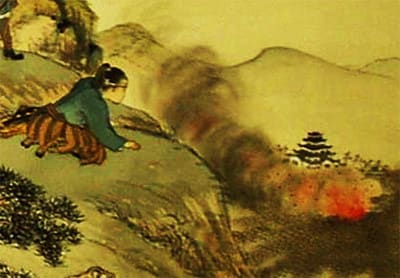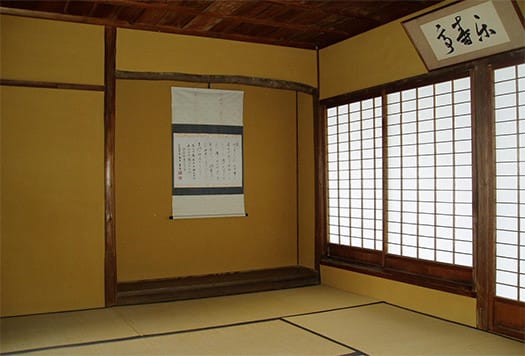


ことしもまたゴールデンウィークは非常事態宣言下。
わたしのような年寄りは行動にそう大差はないのかも知れませんが、
若いみなさんには本当に貴重な時間が失われていますね。
たぶん年寄りの2倍から3倍くらいの感受性の鋭さで
世界を受け止めているみなさんには、こうした制約はかわいそう。
自分がその年代の時にはそれこそカラダまるごと素肌感覚で
この世というものを味わい尽くしていたように思う。
考えてみればああした時間の過ごし方は本当に貴重だったなぁと思える。
しかしこういう過ごし方も、ある意味貴重であるのかも知れない。
そういう環境の中でどう生きていくか、問われるのはそこかも。
幕末・明治初年、そういった青春の一群像があったとされる。
白虎隊というのは会津藩が組織した武家青少年たちの部隊。
その様子を伝えるメディアというか、一種の報道写真集にも似た
幕末明治初年の絵画を参観していた。
明治初年というのはもうすでに西洋人が日本に住んでいて
写真などもたくさん撮影されていた。開拓に着手した北海道では
そういう「歴史写真」を収めようと大型のカメラを担いで多くの
外国人、日本人が集結していたのだという。
一方で函館五稜郭戦争直前、大きな戦争が起こった会津では
さすがに危険を顧みず写真に収めるようなひとはいなかったようだ。
しかし、日本人は滅び行くものへの愛惜の感情は強い国民性。
わたしは日本人なので他国の国民性との比較はわからないけれど
義経にせよ豊臣にせよ、滅んだものへの怨霊的鎮魂心理が強い。
このあたりが中国歴史ともっとも違うところか。
かの国では易姓革命の結果、徹底的に前王朝は否定される。
そのことが現王朝最大のレゾンデートルなので滅んだものへの追慕は
現王朝としては暴力的に封殺するのだろう。
日本の朝廷の存続に底深い部分で中国人が反応する由縁であるのかも知れない。
7人とも19人ともいわれる、まだ年端もいかない10代の隊士たちが
集団自決したことは、大きな禍根として民族のこころに残っていった。
会津の人に聞くと、年始の席で藩主主従役の会話で藩のオトナ役のひとが
「殿、そろそろ薩長に対し蜂起して恨みを晴らすべきでは?」
と問いかけ、それに対して殿様役のひとが、
「あいや、まだ時節を待つべきだ」と狂言をうつという故事を聞く。
薩長側にとっても、忘れがたい戦争だったと思われる。
いまだに明治戊辰の戦役での敗者側は靖国には祀られていない。
そういう滅んだ側への心情が、こうした絵画に映し出されている。
会津からは多くの人たちが北海道に渡ってきている。
この戦役で死んだとされていた人物が北海道で生き延びていたという
数奇な人生についての物語もあったといわれる。
しかしそのことについて冗舌に口を開くことはなく、
問われて、自分のいのちはあのときにみんなと散ったと語ったと伝わる。
少年たちの自決前の表情を描いた絵師の心情からか、
描かれる表情にはまことに清冽な印象が伝わってくる。
日本の歴史はこのあとも、自決という悲しいシーンを重ねていく。・・・
English version⬇
[Japanese beauty for destruction Aizu "Byakkotai" group suicide]
This time, Golden Week is under a state of emergency.
Older people like me may not be so different in behavior,
You're really losing valuable time to young people.
Probably two to three times as sensitive as the elderly
I feel sorry for these restrictions for everyone who accepts the world.
When I was in that age, it felt like my whole body was bare skin
I think I was enjoying the world.
When I think about it, I think that the way I spent that time was really valuable.
However, this way of spending may be valuable in a sense.
That may be the question of how to live in such an environment.
It is said that there was such a group of youth at the end of the Edo period and the first year of the Meiji era.
Byakkotai is a unit of samurai youth organized by the Aizu clan.
It's like a media that conveys the situation, or a kind of news photo book.
I was visiting the paintings of the first year of the Meiji era at the end of the Edo period.
In the first year of the Meiji era, Westerners already lived in Japan
Many pictures were taken. In Hokkaido, where we started pioneering
Many carry a large camera to capture such "historical photographs"
It is said that foreigners and Japanese were gathered together.
On the other hand, in Aizu, where a big war broke out just before the Battle of Hakodate Goryokaku
It seems that no one was able to take a picture without considering the danger.
However, Japanese people have a strong national character of love for things that perish.
I'm Japanese so I don't know how to compare it with the national character of other countries
Whether it is Yoshitsune or Toyotomi, he has a strong spiritual requiescats for the dead.
Is this the most different point from Chinese history?
In some countries, the former dynasty is completely denied as a result of the Naqada Revolution.
That is the largest raison d'etre of the Yuan dynasty, so the mourning for the dead
The current dynasty will violently kill it.
It may be the reason why the Chinese react deeply to the survival of the Japanese imperial court.
Teenage soldiers who are said to be 7 or 19 and are still young
The fact that the group decided to commit suicide remained in the heart of the people as a big sword.
When I asked the people in Aizu, at the beginning of the year, a person who played the role of an adult of the clan talked about the lord and servant of the clan.
"Don, should we uprising against Satsumacho and relieve his resentment?"
In response to that, the person who played the role of the lord
I hear the story of depressing Kyogen, saying, "No, I should still wait for the season."
It seems that it was an unforgettable war for Satsuma.
The loser side of the Meiji Boshin campaign is still not enshrined in Yasukuni.
Such feelings toward the perished side are reflected in these paintings.
Many people from Aizu have come to Hokkaido.
It is said that the person who was supposed to have died in this campaign survived in Hokkaido
It is said that there was also a story about a strange life.
But he never talked about it.
When asked, it is said that his life was scattered with everyone at that time.
Perhaps because of the feelings of the painter who drew the facial expressions of the boys before suicide
The expression drawn conveys a truly neat impression.
The history of Japan will continue to be a sad scene of self-determination.・ ・ ・






















